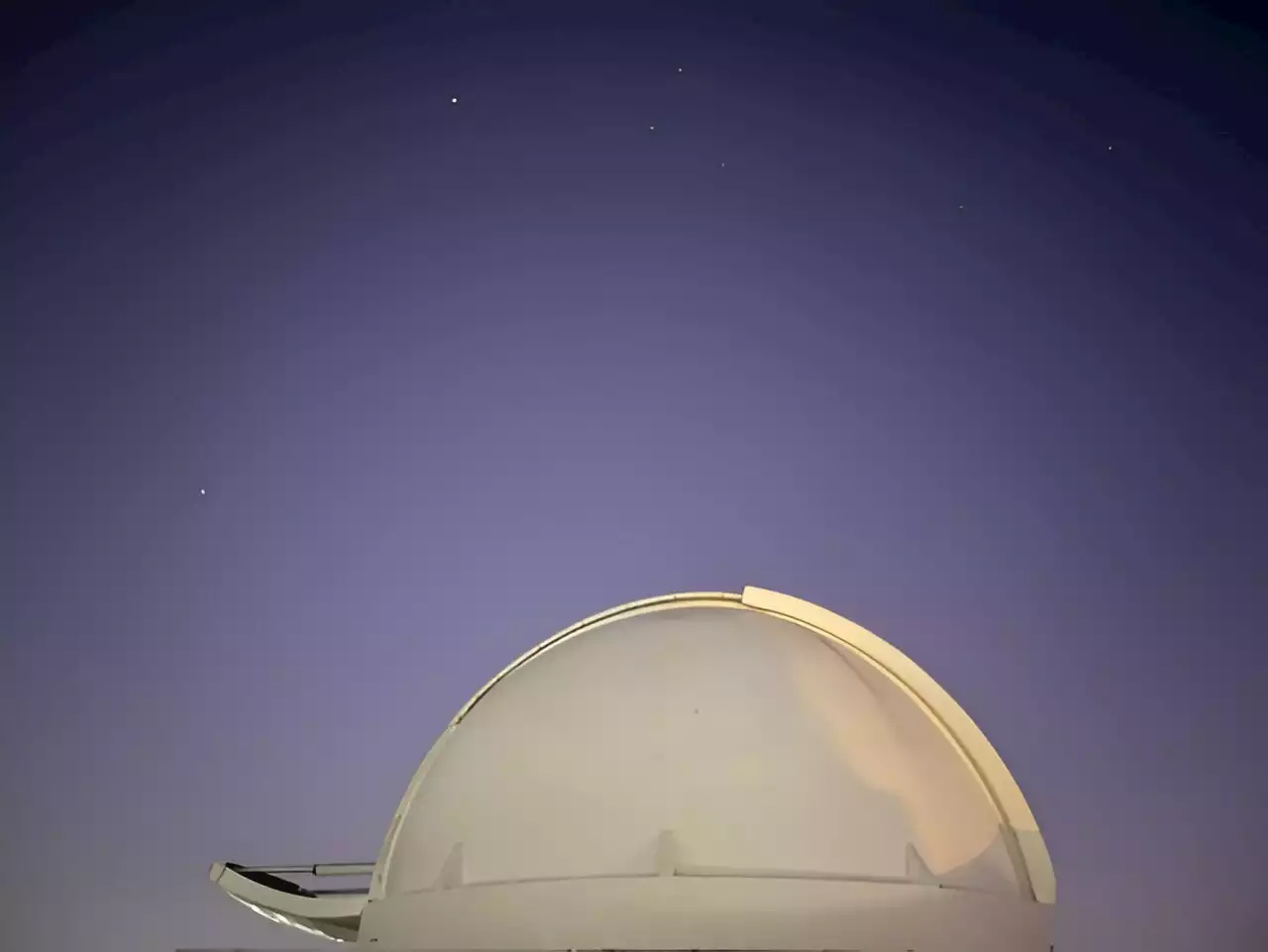It can be tempting to think of the stars that light up the sky each night as timeless. Astronomy professor John Thorstensen knows better. He has spent the last four decades studying cataclysmic binary stars, a pair of stars circling each other in close range: a smoldering dead star known as a white dwarf, and a star like our sun, in the prime of its life, that's been pulled into the dead star's orbit.
The white dwarf gradually siphons off hot gas from its companion, forming a ring that can flare at random intervals. To an observer on the ground, the two appear as one, growing brighter and dimmer with time.and evolve over time," Thorstensen says."Not even the stars are eternal."
In recent years, undergraduates have joined Thorstensen on his hunt through the Astronomy Foreign Study Program. Students spend winter term at University of Cape Town, taking classes from Dartmouth astronomy professors and immersing themselves in South African culture. The highlight is a one-week visit to the South African Astronomical Observatory in Sutherland, a remote location four hours north of Cape Town.
On the drive there, the settlements grow farther and farther apart. Once the sun sets, the absence of light is striking. Each evening, the students would set out from the dormitory with their"night lunches." After a mile-long hike, they would reach the observatory, turn on the equipment, and wait. COVID-19 delayed the trip by two years. By the time senior year arrived, neither student was sure they would get to go. Alvarado-Anderson had been to MDM Observatory on Kitt Peak, near Tucson, which Dartmouth operates as part of a consortium of schools. Burrows had never been farther than Europe. This winter, the stars aligned. This past February, having long finished their prerequisites, they flew to Cape Town.
The faster the star, the greater the shift in wavelength, due to the Doppler effect, the phenomenon that causes the pitch of a siren to drop as an ambulance or fire truck moves away from you. By measuring the changing wavelengths of their target CVs, the students were able to clock their speeds which, in turn, allowed them to calculate theirAll seven of their cataclysmics, they found, were typical, circling each other in periods of a few hours, typically traveling more than 100 miles per second.
Brasil Últimas Notícias, Brasil Manchetes
Similar News:Você também pode ler notícias semelhantes a esta que coletamos de outras fontes de notícias.
 'NightWatch' stargazing guide scores a brand-new updated edition for 2023Firefly Books will release this indispensable astronomy manual on Sept. 7, 2023
'NightWatch' stargazing guide scores a brand-new updated edition for 2023Firefly Books will release this indispensable astronomy manual on Sept. 7, 2023
Consulte Mais informação »
 Century-old Lincoln Heights bar the Airliner reopens with new owners and a new menuPlus, the return of a big-name food hall, an Italian importer lands a bricks-and-mortar, a new pizzeria debuts and more.
Century-old Lincoln Heights bar the Airliner reopens with new owners and a new menuPlus, the return of a big-name food hall, an Italian importer lands a bricks-and-mortar, a new pizzeria debuts and more.
Consulte Mais informação »
 New York City to launch new push to stop subway surfingMayor Eric Adams, Schools Chancellor David Banks and MTA Chair Janno Lieber will unveil a 14-point program to stop the dangerous practice.
New York City to launch new push to stop subway surfingMayor Eric Adams, Schools Chancellor David Banks and MTA Chair Janno Lieber will unveil a 14-point program to stop the dangerous practice.
Consulte Mais informação »
 Alabama’s new congressional district lines blocked, federal judges order new lines drawnThe state is expected to appeal to the U.S. Supreme Court.
Alabama’s new congressional district lines blocked, federal judges order new lines drawnThe state is expected to appeal to the U.S. Supreme Court.
Consulte Mais informação »
